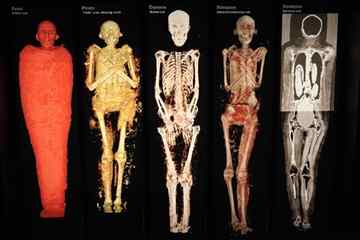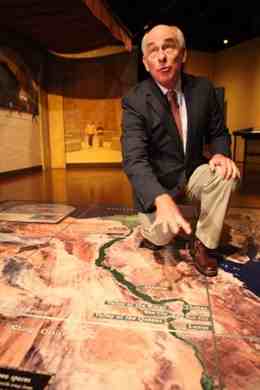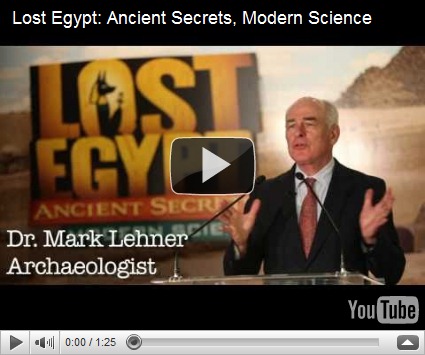In 3,000 years, when our current civilization is dead and deep underwater, android robots will teleport excavation teams to our submerged Atlantis to uncover artifacts that give insight into our culture.
 Sadly, because of the rise in social networks and dependency on digital media, they will probably unearth cell phones filled with drunken sexts and awkward nude pictures.
Sadly, because of the rise in social networks and dependency on digital media, they will probably unearth cell phones filled with drunken sexts and awkward nude pictures.
For now, the Fort Worth Museum of Science and History’s newest exhibit, “Lost Egypt, Ancient Secrets, Modern Science,” shows until Jan. 3 and hopes to make its attendees a little more aware of Egyptian history.
The 6,000 square-foot exhibit travels the country boasting 15 interactive features, 67 artifacts and eight large photos of Egyptian excavation environments.
While most of the country’s Egyptian exhibits have focused on pharaohs, “Lost Egypt” takes a Marxist approach by exploring what life was like for the average Joe in Egypt.
One of the collaborators on the exhibit was archaeologist Mark Lehner, who pushed for an emphasis on highlighting the everyday man.
Lehner used his 30 years of experience researching in Egypt to work with the Science Museum Exhibit Collaborative in creating a hands-on exhibit for the public.
“This exhibit is different than others because we’re interested in finding out what it was like to be broke and poor in Egypt,” he said. “We used advanced technology to recreate scenes of everyday life.”
 The exhibit shows how technology like CT scans and X-rays examine human teeth, bone and genitals to discover age, physical condition and social status.
The exhibit shows how technology like CT scans and X-rays examine human teeth, bone and genitals to discover age, physical condition and social status.
“It’s amazing how much we can find out about older civilizations now,” exhibit attendee Janet Esparza said. “It’s also pretty badass to think that the Egyptians were able to make the pyramids with only simple tools and man power.”
There are many hands-on opportunities for kids, such as rebuilding ancient pottery and creating their own sandstorms.
Viewers also will get up close to “Annie,” which is a mummy of a teenage girl who was likely not royalty but affluent enough to be mummified.
The exhibit shows attendees the process bodies went through to be mummified through hieroglyphic re-enactments.
Many artifacts on display are spaced out throughout the exhibit and separated by theme. When patrons first enter the exhibit, they are greeted by a giant floor map of Egypt.
They are then led on a tour, through video and large scale photos, of the current expedition site located in the Giza Plateau.
Lehner said he hopes the museum serves as an opportunity for students to slow down and take in the lessons of the past. He fears that today’s generation is changing at such a rapid pace that they ignore the past.

“When you look at cultural evolutions, going from villages to empires to where we are now, there’s been a faster evolution in the last hundred years than there has been in human history,” he said. “If you’re living today with your iPhones and your Facebook, you don’t realize where you are on this roller coaster of time. You’re just living for the now and you don’t know where you’re going.”
Becky Adamietz, public affairs director for the museum, said she hopes the exhibit will encourage young people to further their knowledge of ancient history.
“We want patrons to walk through this exhibit and understand what it was like to live in this world thousands of years ago,” she said. “We really want to use the technology that can sometimes create distance between us, to discover brand new things about the past that show us how connected we all are.”
Adamietz also said the museum will attract young people by hosting an event 6-10 p.m. on Nov. 6 for those 18 and older.
The event will be with disc jockey J. Orion spinning dance music.
University of North Texas student Axel Severs attended the exhibit because he said he’s fascinated with Egyptian culture.
“Ever since I first saw Stargate as a kid, I’ve always wanted to know more about the Egyptians,” he said while looking at a mummy. “To actually have a mummy right in front of me is so awesome. It makes me feel like I’ve traveled back in time.”
Author: Lee Escobedo | Source: The Shorthorn [October 27, 2010]